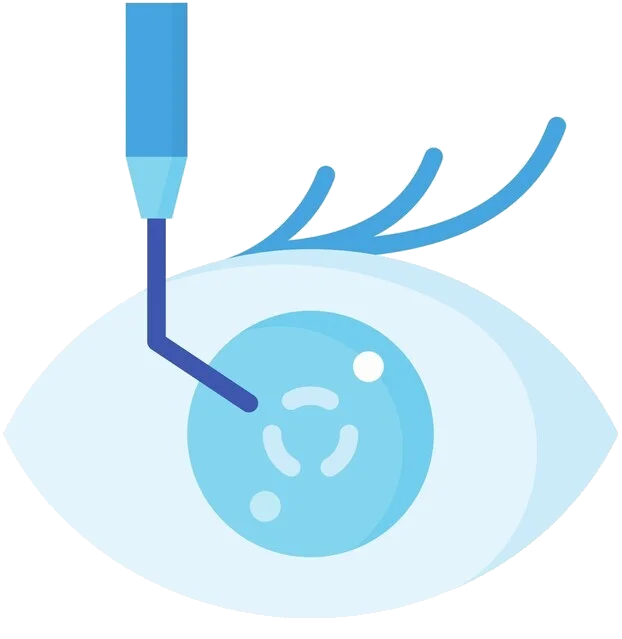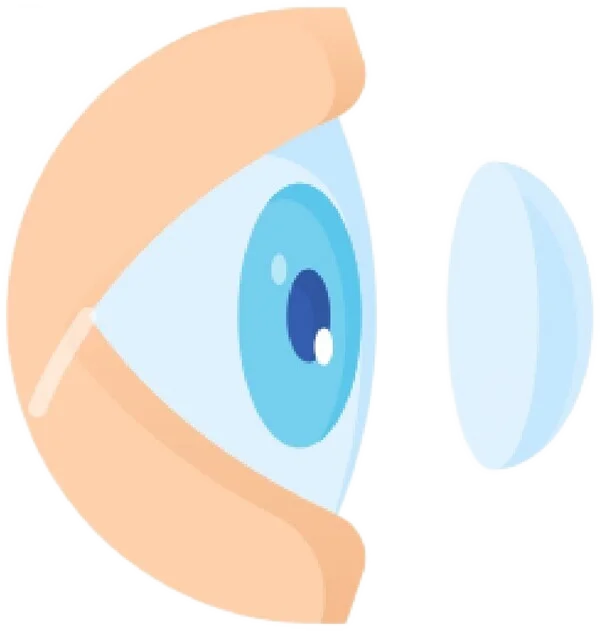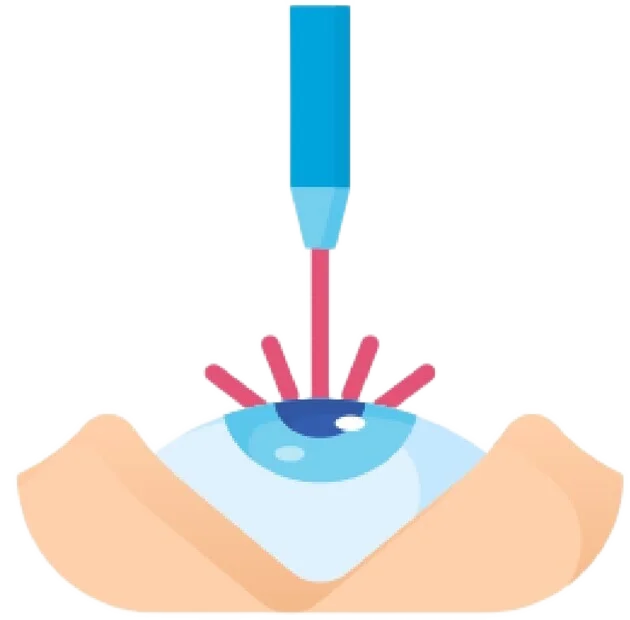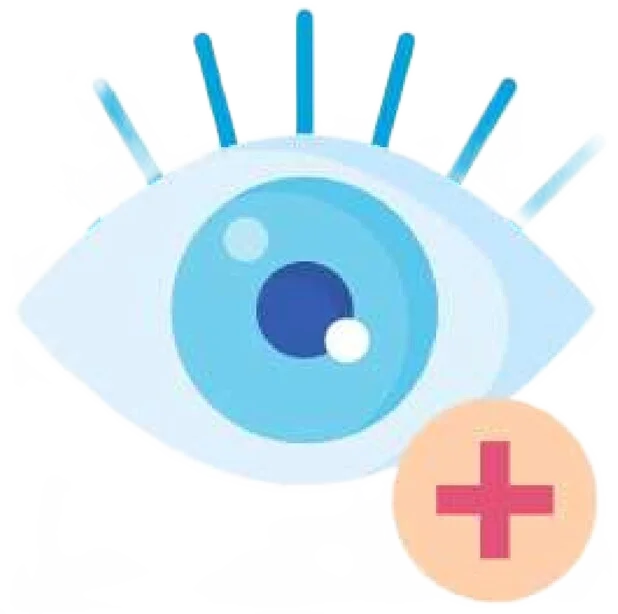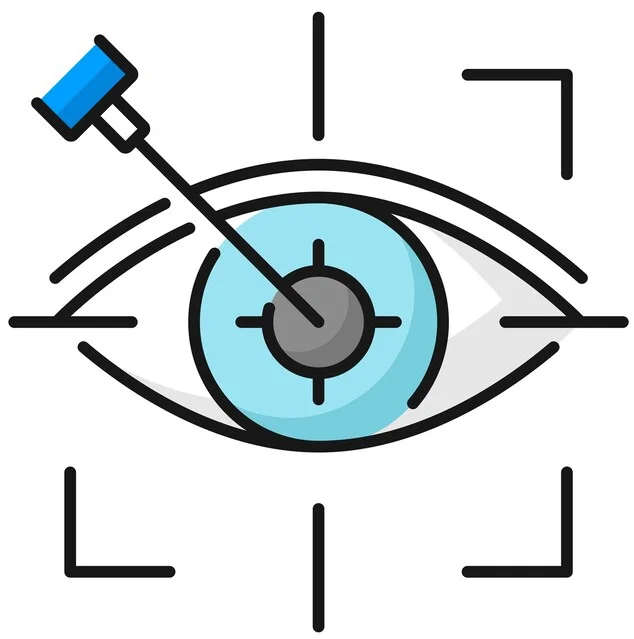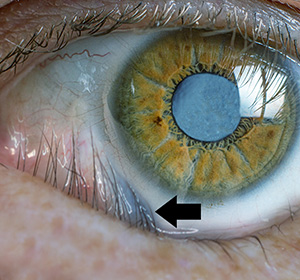
Introduction
What Is Entropion?
Entropion is a condition where the eyelid — usually the lower lid — turns inward toward the eye, causing the eyelashes and skin to rub against the surface of the eye. This inward rolling can lead to significant discomfort, redness, watering, and irritation of the cornea. In more severe cases, it can cause corneal abrasions or infections, potentially threatening vision.
The most common cause of entropion is age-related weakening of the muscles around the eyelids, but it can also result from scarring, previous surgery, infections, or underlying conditions affecting facial nerves or skin.
Initial treatment may include lubricating eye drops, skin tape, or Botox for short-term relief. However, long-term correction typically involves a straightforward outpatient surgical procedure to tighten the eyelid or adjust its position. Early diagnosis and treatment are important to prevent lasting damage to the eye surface.
Causes and Risk Factors of Entropion
What Causes Entropion?
Entropion occurs when the eyelid — most often the lower one — turns inward, causing the lashes and skin to rub against the eye surface. This abnormal positioning is usually due to issues affecting the muscles, skin, or tendons that support eyelid alignment.
Key causes and risk factors include:
Ageing
Age-related muscle and tendon laxity is the most common cause, particularly in adults over 60.
Previous eye surgery or trauma
Scarring from past procedures, injuries, or burns can pull the eyelid inward.
Inflammatory eye conditions
Chronic conjunctivitis or eye infections can irritate the tissue, leading to entropion over time.
Facial nerve weakness or spasm
Muscle spasms or nerve damage (e.g. from Bell’s palsy) can disturb eyelid function and cause it to turn inward.
Congenital entropion
In rare cases, babies are born with entropion due to underdeveloped eyelid structures or muscle tone issues.
Autoimmune or dermatological conditions
Diseases like ocular cicatricial pemphigoid or Stevens-Johnson syndrome can cause scarring that distorts the eyelid.
Determining the underlying cause is crucial for effective treatment. In cases involving scarring or nerve issues, surgery may need to be tailored to address both the structural and functional abnormalities.
Types of Entropion
The Different Types of Entropion
Entropion is classified based on its underlying cause. Identifying the type helps guide appropriate treatment, whether surgical or non-surgical.
Involutional Entropion
Description:
The most common type, caused by age-related loosening of the eyelid muscles and tendons. This weakening allows the lid to turn inward, especially when blinking or squeezing the eyes.Who it affects:
Primarily older adults, typically over age 60.Speed of progression:
Gradual. Symptoms often worsen over time without treatment.
Cicatricial Entropion
- Description:
Results from scarring or contraction of the inner eyelid surface, which pulls the eyelid margin inward. Scars can be due to inflammation, trauma, or previous surgery. - Who it affects:
Individuals with chronic eye inflammation, past injuries, burns, or autoimmune conditions. - Speed of progression:
Can develop slowly or rapidly, depending on the extent of scarring.
Congenital Entropion
Description:
A rare condition present at birth due to abnormal development of the eyelid muscles or folds. Often improves with growth, but persistent cases may require surgery.Who it affects:
Newborns and infants.Speed of progression:
Usually stable but requires monitoring if symptoms affect vision or cause corneal irritation.
Spastic Entropion
Description:
Triggered by eyelid muscle spasms, often in response to irritation or inflammation. The inward turning may be intermittent.Who it affects:
Anyone experiencing eye irritation, infections, or trauma.Speed of progression:
Sudden onset; may improve once the underlying irritation is treated.
Early Signs & Symptoms
Common Symptoms of Entropion
Common Symptoms of Entropion
Recognising the early symptoms of entropion is important to avoid damage to the eye surface. Symptoms often develop gradually and are typically more noticeable in the lower eyelid.
Inward turning of the eyelid
The lower eyelid rolls inward, causing the lashes or skin to rub against the cornea (the clear front surface of the eye).
Eye redness and irritation
Constant friction from eyelashes against the eye can lead to inflammation, redness, and a gritty or scratchy feeling.
Watery eyes (epiphora)
Reflex tearing is common as the eye tries to protect itself from irritation.
Sensitivity to light
Discomfort or squinting in bright light due to ongoing corneal irritation.
Foreign body sensation
A feeling like something is in the eye, caused by inward-turned lashes brushing against the eye surface.
Blurred vision
If the cornea becomes scratched or inflamed, it can temporarily affect clarity of vision.
Crusting or discharge
Chronic irritation may lead to discharge, especially upon waking.
Eye fatigue or discomfort with blinking
Patients may notice increased blinking or soreness, especially after prolonged eye use.
Diagnosis and Treatment of Entropion
Entropion is typically diagnosed during a detailed eye examination, where the ophthalmologist will assess the eyelid’s position, look for signs of inward turning, and check for any corneal irritation or damage caused by the eyelashes rubbing against the eye.
Initial treatment often focuses on relieving symptoms and protecting the eye. This may include lubricating eye drops, ointments, or taping the eyelid to temporarily reposition it. In some cases, botulinum toxin (Botox) injections may be used to help relax the eyelid muscles.
However, for a long-term solution, surgery is usually recommended to correct the eyelid’s alignment. The procedure is typically done under local anaesthesia on an outpatient basis, with a high success rate in restoring comfort and preventing further eye damage.
Why Timely Diagnosis Matters
Entropion Can Lead to Corneal Damage and Vision Loss if Ignored
When the eyelid turns inward, the eyelashes rub against the eye surface, causing constant irritation. Without timely diagnosis and treatment, this friction can result in corneal abrasions, infections, and even vision-threatening complications. Early intervention helps protect the eye and prevent long-term damage.
Prompt diagnosis allows your ophthalmologist to:
- Identify the type and severity of entropion
- Prevent complications like corneal ulcers or infections
- Prescribe protective eye drops or temporary solutions
- Recommend surgery before permanent eye damage occurs
- Preserve clear vision and overall eye health
Early detection leads to quicker relief and better long-term outcomes.
Continue Learning About Cataracts
Other Eye Conditions
The eyes are the most complex sensory organ in our bodies. The eyes provide vision by recording images of our surroundings that the brain will interpret. Although the eye measures only about an inch...
Worried About Your Vision?
Schedule a consultation with Mr. Mo Majid to evaluate your eye health.
Quick Answers About Entropion
Can entropion go away on its own?
Entropion typically does not resolve without treatment. While temporary measures like eye drops or taping may offer short-term relief, surgery is often needed to correct the eyelid position permanently.
Is entropion surgery painful or risky?
Entropion surgery is usually a minor outpatient procedure performed under local anaesthesia. Most patients experience minimal discomfort and recover quickly with excellent results.
What happens if entropion is left untreated?
If untreated, entropion can lead to corneal abrasions, infections, scarring, and potential vision loss due to constant friction from the eyelashes rubbing against the eye.


